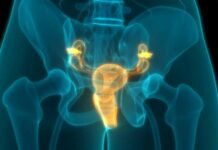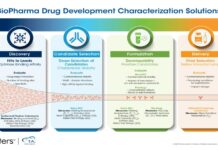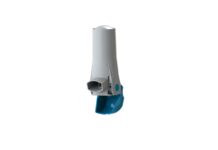Since the introduction of routine rotavirus vaccination in 2006, rates of diarrhea-related hospitalizations in US children have decreased significantly.
Diarrhea-related health care use among young children in the United States has dramatically decreased since the implementation of rotavirus vaccines, the results of a recent study indicate. In addition, the study estimates that more than $900 million in health care costs have been avoided due to vaccination.
In 2006, routine vaccination with the pentavalent rotavirus vaccine (RV5) was recommended for infants by the Advisory Committee on Immunization Practices, and the monovalent rotavirus vaccine (RV1) was added to the recommendation in 2008. The current study, published online on June 9, 2014, in Pediatrics, analyzed data from the 2001-2011 Truven Health MarketScan Commercial Claims and Encounters Database to evaluate reductions in diarrhea-associated health care use among children younger than 5 years after the introduction of both vaccines. The retrospective analysis also assessed the direct and indirect effectiveness of the vaccines.
The researchers of the study analyzed annual RV5 and RV1 vaccine coverage and compared rates of diarrhea-associated hospitalizations, emergency department visits, and outpatient visits during a pre-vaccine period (2001 to 2006) and during a post-vaccine period (2007 to 2011). Rates of diarrhea-associated health care use were also compared among vaccinated and unvaccinated children, and among unvaccinated children in pre- and post-vaccine periods.
By the end of 2010, 58% of children included in the study had been vaccinated with at least 1 dose of RV5 and 5% had received at least 1 dose of RV1. The results indicated that diarrhea-associated hospitalizations were significantly lower for each of the 4 seasons after the vaccines were introduced, and emergency department and outpatient visits were significantly lower in all seasons, except for the 2008-2009 season. Compared with the average rate of hospitalizations for diarrhea from 2001 to 2006, hospitalization rates fell by 75% in 2007-2008, 60% in 2008-2009, 94% in 2009-2010, and 80% in 2010-2011.
During the 2010-2012 season, the rate of hospitalizations decreased by 92% among children vaccinated with RV5 and by 96% among those who received RV1 when compared with unvaccinated children. Emergency department visits also significantly declined by 31% among children who received RV5 and by 33% among those who received RV1 when compared with unvaccinated children. In addition, hospitalization rates among unvaccinated children significantly decreased by 50% in 2007-2008, 77% in 2009-2010, and 25% in 2010-2011 when compared with the average rate during the pre-vaccine period.
Overall, the researchers estimated that 176,587 hospitalizations, 242,335 emergency department visits, and 1,116,869 outpatient visits were avoided among children younger than 5 years from 2007 to 2011. Based on these numbers, they estimated that health care costs were reduced by $924 million during this period.
“Both rotavirus vaccines showed comparable effectiveness and long-term protection was documented for RV5,” the authors of the study wrote. “Indirect benefits from vaccination were observed and have amplified the overall impact of the vaccination program.” – See more at: http://www.pharmacytimes.com/news/Rotavirus-Vaccination-Decreases-Diarrhea-Hospitalizations-Among-Kids#sthash.mJ38G9hS.dpuf




















